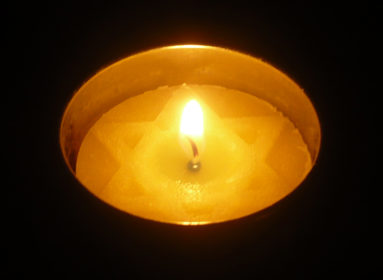Shmita: “From perceived scarcity to revealed abundance”
By Cindy Mindell
FALLS VILLAGE – Tu B’Shevat is the Jewish holiday that tends to bring out the Jewish community’s collective green thumb, or, in colder climes like Connecticut’s, at least our green consciousness. Israelis may get to reconnect to the earth this season by planting saplings, but the celebratory gestures afforded Northeastern Jews tend to be more figurative – feasting on symbolic nuts and fruits at a Tu B’Shevat seder, planting seeds in pots, creating eco-themed crafts. (This month, at least a couple of intrepid Jewish organizations around the state are planning outdoor planting activities, weather permitting.)
Looking a few months beyond the “New Year of the Trees,” there’s a longer Jewish environmental observance on its way, with the start of the next shmita year, on Rosh Hashana 2014.
Hebrew for “release,” shmita is the Biblically mandated “sabbatical year” of the seven-year agricultural cycle, when the land is left to rest and debtors are released from their financial obligations.
The Ledger spoke with Steve Sherman of the Isabella Freedman Jewish Retreat Center in Falls Village about this ancient Jewish tradition and its modern-day manifestations.
A native of Barrington, R.I., Sherman, 25, holds a degree in agro-environmental sciences from McGill University and was an Adamah (farm) Fellow at Isabella Freedman in 2011. After managing the on-site dairy, Sherman now works in maintenance and educational projects at the center.
Q: Why is ‘shmita’ significant in Judaism and to you personally?
A: I don’t think you can understand Judaism and the Torah unless you understand something about agriculture. You can’t understand what it means to sacrifice something unless you have experienced an inexplicable storm or disease that really affected your livelihood, or if your job and life depend on nature. There’s an expression, “God personally holds the keys to heaven and to the rain.”
As someone who’s worked in farming and will continue to do so, and as a Jew, I find meaning in combining those two big concepts. When I’m out working in the fields, at the end of a long week, Shabbat is this totally meaningful thing, a rest from work. So the work I’ve put in during the week feels more meaningful and Judaism feels more meaningful because of the agricultural context I work in. Working in agriculture gives me access to a level of Judaism that I don’t think other people get: Judaism is an agricultural religion and in working with the seasons and with my hands, I get more out of it than those who don’t have manual or nature-based jobs.
When I was at university studying agriculture, I would keep Shabbat to one extent or another, but it just felt like a day off. Now that I work with my hands and outside, Shabbat is a whole different thing: spiritual and physical rest, a time to stop the constructive, creative aspects of my life and take a step back and accept myself and my life as they are. When you work, you’re bringing into effect things in your world; on Shabbat we stop making and creating and accept things the way they are.
Shmita is that phenomenon to the Nth degree, the Shabbat of Shabbats. It’s a year when you’re not engaged in any annual production – seeding, reaping all your grains at once, staging massive collections of olives or fruit or grapes. You’re just using plants as you need.
As an environmentalist and agriculturalist, this is a really profound concept. We have this beautiful tradition of non-creative action in order to admire the things around us and develop appreciation for the natural world and a sense of humility in seeing that the universe doesn’t fall apart when you cease your everyday, career-oriented activities.
Yigal Deutscher, founder of Hazon’s Shmita Project and a personal friend and inspiration, wrote that shmita is the move from perceived scarcity to revealed abundance. To me, those two phrases in contrast express the difference between shmita and non-shmita years, and between a healthy agricultural Judaism and a spiritual practice which often isn’t in tune with the environment.
Q: What are Hazon and Isabella Freedman doing in preparation of and during the shmita year, and how will you spend the year?
A: Many people at Isabella Freedman and other places are talking about shmita as the pinnacle of holiness. It was a practice that had such a broad set of implications, it was fundamental to how the Torah envisioned society. You’re excusing all debt, so people are returning to a baseline. It’s a way to stop or check inequality, to stop the tendency of societies to stratify people based on income. It’s also a sustainable practice purely from a soil standpoint. But it’s a way of bringing creativity into people’s careers and lives, challenging them to do something different from what they usually do during the other six years. We take a step back and look at what it is that we’re doing that maybe isn’t exactly what we want to do, and see where we can make small changes to bring out new creative fruit.
The center is bringing attention to Parshat Behar, the section of the Torah [Leviticus 25:1-26:2] that first mentions the shmita concept. We’re organizing a national study day on that Shabbat to introduce people to the concept and start the conversation. The annual Hazon-Isabella Freedman Israel Sustainable Food Tour will have a shmita theme this year.
I got excited about the shmita year as a time to mark stages in our lives, a seven-year increment and a year of reflection on the previous six years and anticipation of the next seven years. My girlfriend – who manages the dairy at Isabella Freedman and is a cheese maker – and I wanted to do something a little unusual and in keeping with the idea of not planting annual crops or engaging in the usual labors of the year, we’ll go to Italy so that she can learn cheese making and to Israel so that I can learn Hebrew and she can learn more cheese-making.
It’s a Sabbatical year, a chance to go out and do the things you really want to do because you’re not bound by concern for career advancement and improving your financial situation, but rather to accept your life as it is. Through this travel, we’re hoping to listen and see what God and the universe send back.
Q: Practically, what are some things we can do to observe ‘shmita’?
A: We in the broader “Jewish food movement” are asking people to make a jump: even if we’re observing halacha – and not all of us are – we’re not saying that you need to keep the halacha of shmita to the letter. What we’re asking is to consider investigating the spirit of the law and how you can take the spirit of this very profound Jewish practice and apply it to your life.
Shmita is not applicable outside the Land of Israel. So, as North American Jews, we have no obligation to observe it, but there are very profound and relevant socially and environmentally significant issues that shmita raises and there are answers as well. Shmita is Judaism’s answer to materialism, a capitalism of greed, to the kind of career and work lives in which we live to work instead of work to live. Often we lose sight of these things in our rat race.
Shmita says, take a step back, look around at what you’re doing in your life, take a sabbatical – this is the origin of the academic sabbatical, when a professor leaves teaching to explore interests and take a break and come back renewed and ready to do the kind of work they’re being asked to do.
For someone with a green thumb, it’s about planting perennials because shmita is not saying not to get your food from plants, but get it from perennial sources, and only what you need for the day. You’re not allowed to store crops not available to everybody. You can plant a fruit tree on the edge of your property with the intention that, when you’re able to harvest, the fruit will be available to everyone in the next shmita year. Equal access to certain things like food is a fundamental part of Judaism.
In very general terms, perennial agriculture tends to be more sustainable because it’s not as hard on the soil and often requires less input. What part of your diet is coming from perennial foods, what part of your diet is sustainable? An essential Jewish question is, what are you eating and why are you eating it? What is the implication of your diet?
Besides the agrarian laws, shmita is about the release of debts, so you can engage in some kind of social-justice activity: see where debt is crippling people in your society, where people can’t escape some kind of situation because they’re indebted, and see if you can help them. Any activity that gets food to everyone, that’s an essential. During shmita in the ancient Land of Israel, the Israelites were taking down fences and allowing everybody to have access to their crops. Donating to a food bank is a perfect example of keeping with the spirit of this law.
It’s also a year of exploration. At the end of shmita, the nation of Israel would read the Torah as part of a celebration that they had survived the year, so it’s a year to study the religion, especially from this agricultural perspective.
Shmita resources:
Hazon’s Shmita Project: www.shmitaproject.org
Isabella Freedman Jewish Retreat Center and Adamah Organic Farm: www.isabellafreedman.org
Neot Kedumim, the Biblical Landscape Reserve in Israel: www.neot-kedumim.org.il
The Sova Project, a joint initiative of the Center for Global Judaism at Hebrew College, the Baltimore Jewish Environmental Network, and the Heschel Sustainability Center, inspired by the upcoming shmita year: www.sovaproject.org
Coalition on the Environment and Jewish Life (COEJL): www.coejl.org
Jewcology: www.jewcology.com
Jewish Farm School: www.jewishfarmschool.org
Eden Village Camp: www.edenvillagecamp.org
The Jew & The Carrot, the new Jewish food movement blog, a partnership of Hazon and The Forward: www.blogs.forward.com/the-jew-and-the-carrot
Comments? email cindym@jewishledger.com








 Southern New England Jewish Ledger
Southern New England Jewish Ledger











